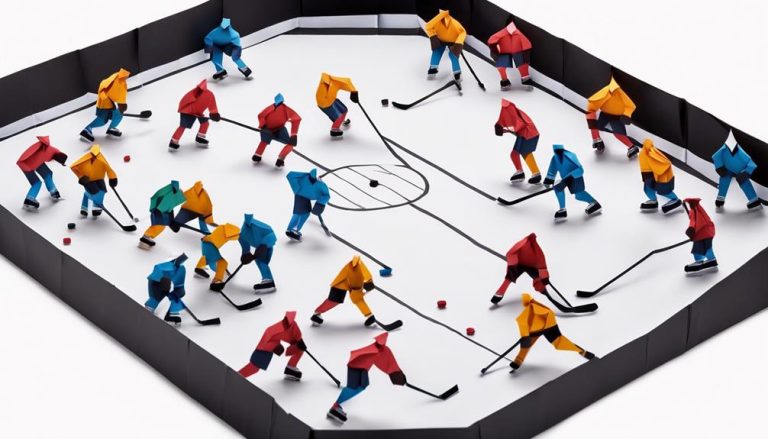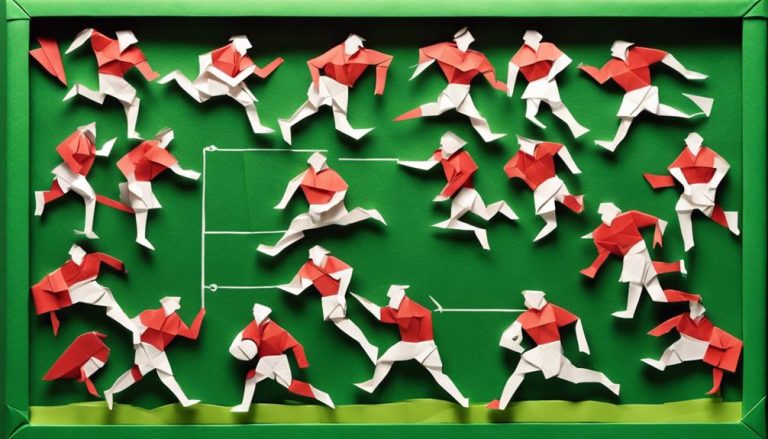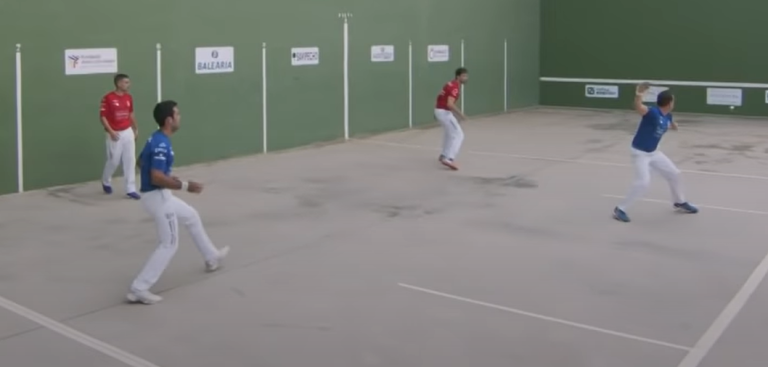General Rules of Polocrosse
In the puzzle of polocrosse, deciphering the intricacies of the game can be akin to solving a complex mystery. As a player venturing into this equestrian sport, understanding the general rules is paramount. From the dimensions of the field to the specific markings, each aspect contributes to the essence of the game. However, it is not just about the physical elements; player roles and responsibilities play a critical part in the seamless flow of a polocrosse match. Stick around to uncover the essential guidelines that govern this unique sport.
Field Dimensions and Markings
When setting up a polocrosse field, it is important to adhere to specific dimensions and markings. The field should be 146 meters long and 55 meters wide, with goal posts at each end that are 2.4 meters apart. The center of the field should be marked with a circle that has a 10-meter radius. These dimensions guarantee a fair and competitive playing field for all participants.
Field maintenance is critical in polocrosse to guarantee a safe and enjoyable experience for players. Regularly mowing the grass to a short length, filling in any holes or divots, and marking the boundaries clearly are essential tasks. Proper maintenance not only enhances the playing conditions but also reduces the risk of injuries during matches.
Player substitutions are allowed in polocrosse to provide opportunities for rest and strategic changes during the game. Substitutions can be made at any time, but the player coming off the field must leave before the replacement enters. This allows for a smooth and keeps the game flowing smoothly. Coaches and players should communicate effectively to make substitutions efficiently and effectively.
Player Equipment Requirements
To participate in polocrosse, players must adhere to specific equipment requirements that guarantee safety and fair play on the field. Safety gear is paramount in polocrosse to assure the well-being of both horse and rider during the fast-paced game. Helmets are mandatory for all players, providing protection against potential head injuries. Additionally, players must wear appropriate footwear, such as boots with heels, to maintain stability while riding and maneuvering on the field. Body protectors are highly recommended to reduce the risk of injuries from falls or collisions.
When it comes to equipment maintenance, players are responsible for making sure their gear is in good condition before taking to the field. Regular checks should be conducted on helmets to confirm they are securely fastened and free of any damage. Boots must be inspected for loose parts or worn-out soles that could compromise safety. Body protectors should be checked for any signs of wear and tear, making sure they provide adequate protection during gameplay.
Below is a table outlining the essential player equipment requirements in polocrosse:
| Equipment | Requirement |
|---|---|
| Helmet | Mandatory |
| Footwear | Boots with heels |
| Body Protector | Recommended |
Scoring and Game Duration
Understanding the scoring system and game duration is essential for players and spectators alike to fully engage with the dynamic sport of polocrosse. In polocrosse, points are scored by successfully shooting the ball through the opposition's goal posts, earning one point for each successful goal. The team with the highest number of points at the end of the game emerges victorious. This scoring method adds an element of excitement and strategy to the game, requiring players to exhibit skill and precision in both attack and defense.
When it comes to time limits, polocrosse matches are typically divided into chukkas, which are similar to periods or quarters in other sports. Each chukka usually lasts around 8 minutes, and a standard game consists of four to six chukkas, depending on the level of play and competition rules. The structured time limits make sure that the game moves at a fast pace, keeping players on their toes and maintaining the intensity of the match.
Umpire Signals and Penalties
Moving on from the scoring and game duration aspect, familiarize yourself with the various umpire signals and penalties in polocrosse to enhance your understanding of the game's rules and regulations.
In polocrosse, umpire communication plays a critical role in maintaining fair play. Understanding the signals used by umpires can help you follow the game more effectively. Here are some key signals and penalties you should be aware of:
- Whistle Blow: The umpire uses a whistle to signal the start and stop of play, as well as to indicate fouls or penalties.
- Yellow Card: This card is shown to a player as a warning for minor infractions. Two yellow cards may lead to a red card.
- Red Card: A player receiving a red card is sent off the field and cannot be replaced, usually due to serious misconduct.
- Free Throw: When a foul occurs, the umpire awards a free throw to the opposing team at the location of the infringement.
- Penalty Goal: In cases of severe fouls, a penalty goal may be awarded, allowing the fouled team to take a shot at goal without interference.
Penalty enforcement is essential in maintaining player conduct and ensuring a level playing field. By understanding these signals and penalties, you can actively participate in promoting fair play and sportsmanship within the polocrosse community.
Player Roles and Responsibilities
Explore the intricacies of the positions and responsibilities held by players in the dynamic sport of polocrosse. In polocrosse, teamwork dynamics play a critical role in achieving success on the field. Each player on the team has specific roles and responsibilities that contribute to the overall strategy and tactics employed during the game.
One of the key aspects of player roles in polocrosse is the combination of horse rider skills and stick handling techniques. Players must not only possess excellent horsemanship to navigate the field effectively but also demonstrate mastery in using their polocrosse sticks to carry, catch, and throw the ball with precision. The forward players focus on offense, aiming to score goals by working together to move the ball towards the opposing team's goalposts. In contrast, the defenders prioritize protecting their own goalpost and intercepting the opposition's advances.
Effective communication and coordination among players are essential to guarantee seamless gameplay. Players must be able to adapt quickly to changing situations on the field and make split-second decisions that benefit the team as a whole. By understanding and executing their designated roles with expertise, players can enhance their team's performance and increase their chances of victory in the thrilling sport of polocrosse.
Frequently Asked Questions
Can Players Switch Positions During a Game?
Sure, players can switch positions during a game in Polocrosse. These tactical swaps are often strategic moves to enhance team cohesion and adapt to different game scenarios. Position rotations play a key role in shaping the game's outcome.
Are There Any Restrictions on the Type of Horse That Can Be Used in Polocrosse?
When it comes to the type of horse you ride in polocrosse, there are key requirements to ponder. Breed restrictions might apply, ensuring the horse is fit for the game. Also, equipment specifications and mallet guidelines are vital for an exhilarating match.
Are There Any Age Restrictions for Players Participating in Polocrosse?
In polocrosse, age restrictions guarantee player safety and skill development. While there may be a junior division for younger players, these guidelines aim to create an environment where all participants can thrive and enjoy the sport.
How Are Ties or Draws Handled in Polocrosse Games?
In polocrosse games, ties are usually broken through overtime rules. If the game is still tied after regular play, teams may go into extra time or even have a shootout to determine the winner based on referee decisions and fair play.
Are There Any Specific Rules Regarding the Types of Mallets That Can Be Used in Polocrosse?
In polocrosse, players can use various types of mallets, but there are specific rules to follow. Material restrictions apply to guarantee fair play. Mallets must meet length requirements and be used with proper hitting techniques.






